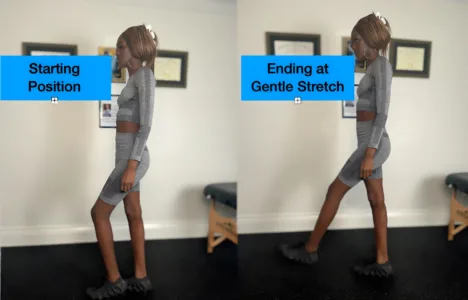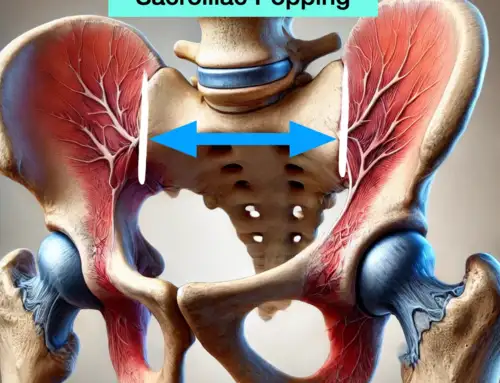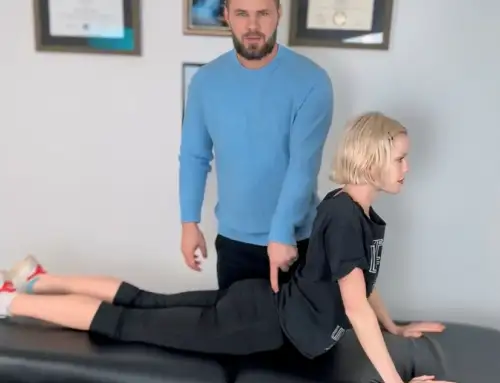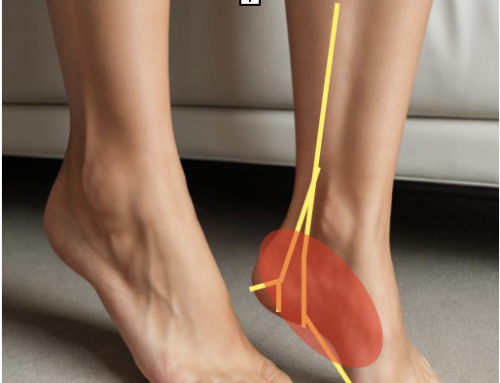Relieve Pain Behind Your Knee: Try This Stretch

Experiencing discomfort, behind the knee when the leg is straight may stem from a range of causes like overuse, muscle tension or a serious injury. It’s crucial to seek guidance, from a healthcare provider for an assessment and suitable treatment strategy.
Examining the Knee’s Intricate Anatomy
As a sports medicine specialist, I know how critical it is to investigate the complex anatomy of the knee to treat pain successfully. The intricate construction of the knee joint is essential to our everyday mobility. Now let’s examine its parts:
- The patella (Kneecap), also known as the kneecap, is a protective barrier that improves leverage when performing dynamic movements like jumping or kicking. It is situated at the front of the knee joint.
- Femur (Thigh Bone): One of the longest bones in the body, the femur joins the tibia and patella to enable smooth leg bending and straightening.
- Tibia (Shinbone): The tibia supports the majority of our body weight.
- Ligaments: Sturdy bands of tissue that restrict excessive movement and offer stability. The Popliteal Ligament and the Posterior Cruciate Ligament (PCL) are two essential ligaments implicated in pain below the knee when straightening the leg.
- Muscles: The quadriceps, hamstrings, and calf muscles, which surround the knee joint, are involved in leg extension, flexion, and overall knee stability.
Try This At Home Stretch
Try this quick at-home treatment before you go any further! In my experience, outside of trauma or a baker’s cyst, the most common reason for knee pain when straightening the leg is usually nerve pain. So try this:
- Straighten the leg as far as pain doesn’t occur.
- Gently kick the leg forward until a gentle stretch is felt behind the knee or hamstring, and immediately return to the starting position. Do two sets of 15 gentle stretches, and check if the pain has reduced or if more motion is possible.
- Repeat daily 15×5 per day until symptoms resolve.
Consult your healthcare provider prior to attempting this stretch.
Key Indicators of Knee Pain
Recognizing the symptoms of knee pain is essential for identifying the root causes. Here are some common indicators:
- Aching or discomfort at the back of your knee when straightening your leg
- Swelling or inflammation around the affected area
- Difficulty bearing weight on the impacted leg
- Limited range of motion, hindering full extension or flexion of your knee
- Audible clicking or popping noises during movement
- The sensation of instability or potential giving out feeling in your knee
Distinguishing between acute and chronic knee pain is also essential:
- Acute Knee Pain: Typically caused by sudden knee injuries like sprains, strains, or ligament tears. Seeking immediate medical attention is crucial to prevent further harm.
- Chronic Knee Pain: Persistent discomfort lasting beyond three months, often resulting from overuse injuries, arthritis, tendonitis, or other degenerative conditions. Professional medical intervention may be necessary.
Understanding these symptoms and differentiating between acute and chronic knee pain helps select appropriate treatment approaches and know when to seek medical help.
Possible Causes of Back of the Knee Pain
Experiencing pain in the back of your knee when straightening your leg can be frustrating. Let’s explore some potential causes:
- Sciatica- The sciatic nerve runs down the leg behind the knee. It splits into two nerves, the tibial and peroneal branches. It’s common for the sciatic nerve to experience compression from a hamstring strain.
- Baker’s Cyst: Excess fluid buildup at the back of the knee joint can lead to a Baker’s cyst, causing pain and stiffness, commonly from a meniscal tear.
- Hamstring Tendonitis: Inflammation and irritation of the muscles at the back of your thigh responsible for leg extension can result in pain.
- Meniscus Tear: Tears in the cartilage pads within your knee joint, often caused by sudden twists or changes in direction, can lead to discomfort when straightening your leg.
- Posterior Cruciate Ligament (PCL) Injury: Injuries to the PCL at the rear part of your knee may result in posterior knee pain during full leg extension.
- Knee Arthritis: Osteoarthritis or rheumatoid arthritis affecting the kneecap can contribute to discomfort behind the knee during complete extension.
- Popliteal Injury: An external leg rotator that can become injured from overuse or a strength imbalance with the hamstrings.
Recognizing these potential causes and associated symptoms is crucial for understanding what might trigger your pain. While self-diagnosis can provide insight, consulting a healthcare professional for an accurate diagnosis is strongly recommended.
Self-diagnosing Knee Pain and Seeking Medical Help
While self-diagnosing causes of knee pain can be helpful, it should not replace professional medical advice. Here are some potential culprits behind pain in the back of the knee when straightening your leg:
- Baker’s Cyst: A fluid-filled sac that forms behind the knee joint, often associated with underlying knee conditions and also known as a popliteal cyst.
- Hamstring Tendonitis: Inflammation or irritation of biceps femoris tendons at the back of your thigh due to overuse or repetitive strain.
- Meniscus Tear: Tears in the cartilage pads between your thighbone and shinbone, resulting from sudden twists or degenerative changes.
- Sciatica– Often occurs with hamstring tendinitis.
Other knee injuries that occur concurrently include a quadriceps strain and patellar tendonitis, known as jumper knee.
While these are common causes, consulting a medical professional for an accurate diagnosis is essential. In the next section, we will guide self-diagnosing potential sources of knee pain from a home remedies perspective.
Expert Diagnosis, Treatment Options, and Preventive Measures
When experiencing pain in the back of your knee when straightening your leg, it’s crucial to consult a healthcare professional for an accurate assessment. Here’s what you can expect:
- Specialized Consultation: Make an appointment with a sports medicine doctor or orthopedic specialist specializing in knee issues.
- Comprehensive Evaluation: Expect a thorough physical examination, including range of motion, stability, swelling, tenderness, and any clicking or popping sensations.
- Diagnostic Imaging: X-rays or MRI scans may be recommended to gain insight into your knee joint’s condition.
- Arthroscopic Procedure: In some cases, arthroscopy may be performed to visualize internal structures directly for more precise diagnoses.
- Tailored Treatments: Treatment options may include physical therapy, medications, injections, or surgical interventions, depending on the diagnosis.
Prevention is critical to maintaining knee health. Here are some expert tips:
- Maintain an optimal weight to reduce strain on your knees.
- Strengthen leg muscles through targeted exercises.
- Focus on proper exercise form and wear supportive footwear.
- Warm up before physical activity to prepare your muscles.
- Avoid overuse injuries and listen to your body’s signals.
- Consider knee braces or supportive devices if needed.
- Stay hydrated to promote joint lubrication.
By following these preventive measures and making necessary lifestyle changes, you can significantly reduce the risk of experiencing pain in the back of your knee when straightening your leg.
When to Seek Medical Help
Suppose you experience persistent or severe pain when straightening your leg from the back of the knee area. In that case, it’s essential to seek medical help. Early intervention can lead to better outcomes and improved quality of life. Consult a sports medicine doctor or orthopedic specialist for an accurate diagnosis and appropriate treatment plan.
Overstretching will not help, gentle stretching only.
Reach out to book with Dr. Dean by texting or calling 323-354-6077 or email him at drjustindean@gmail.com
Our editorial process includes evidence-based practices, interventions, and recommendations.
References
Pesonen J, Shacklock M, Suomalainen JS, et al. Extending the straight leg raise test for improved clinical evaluation of sciatica: validity and diagnostic performance with reference to the magnetic resonance imaging [published correction appears in BMC Musculoskelet Disord. 2021 Nov 10;22(1):937] [published correction appears in BMC Musculoskelet Disord. 2022 May 31;23(1):518]. BMC Musculoskelet Disord. 2021;22(1):808. Published 2021 Sep 21. doi:10.1186/s12891-021-04649-z
Wells ME, Scanaliato JP, Dunn JC, Garcia EJ. Meniscal Injuries: Mechanism and Classification. Sports Med Arthrosc Rev. 2021;29(3):154-157. doi:10.1097/JSA.0000000000000311





